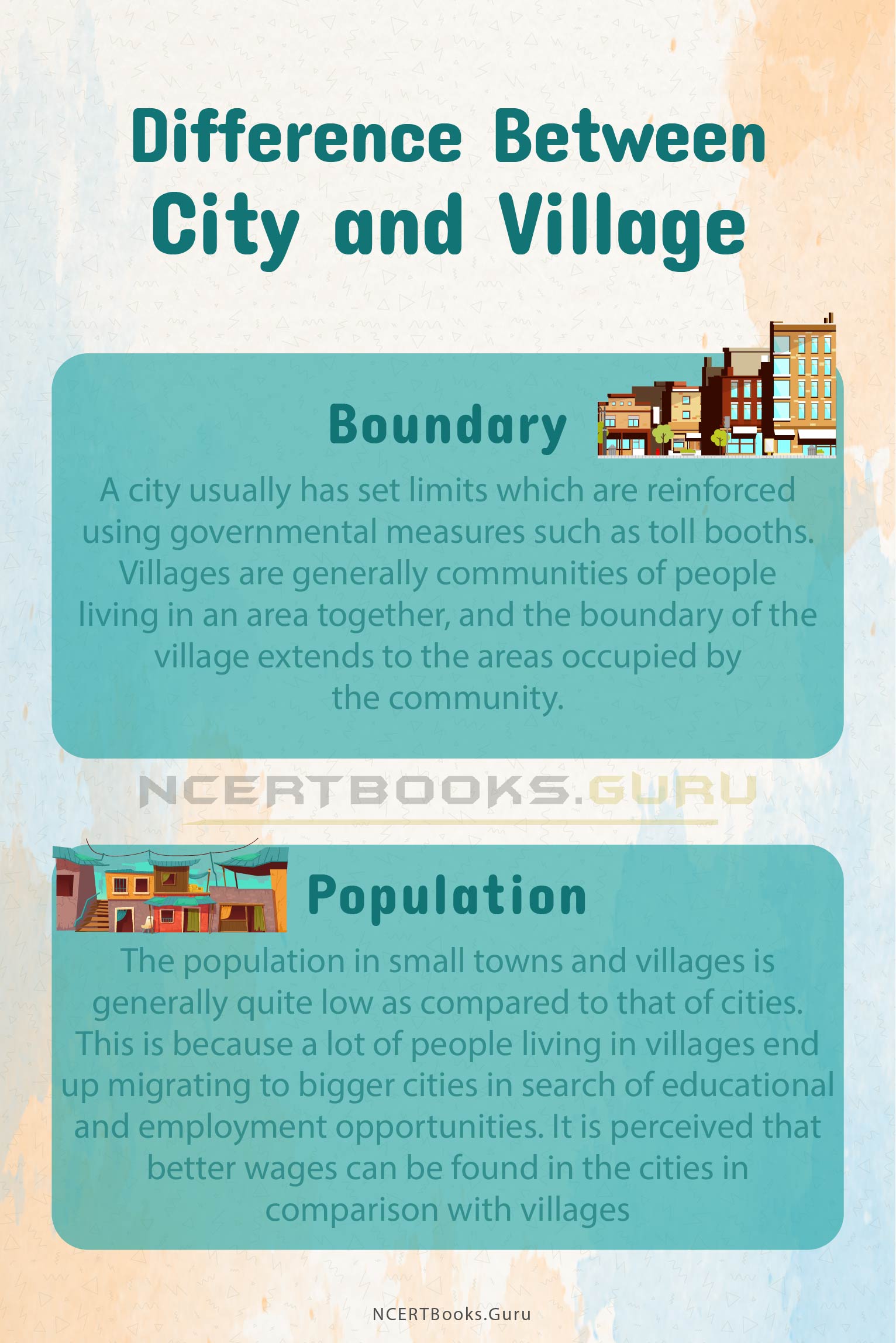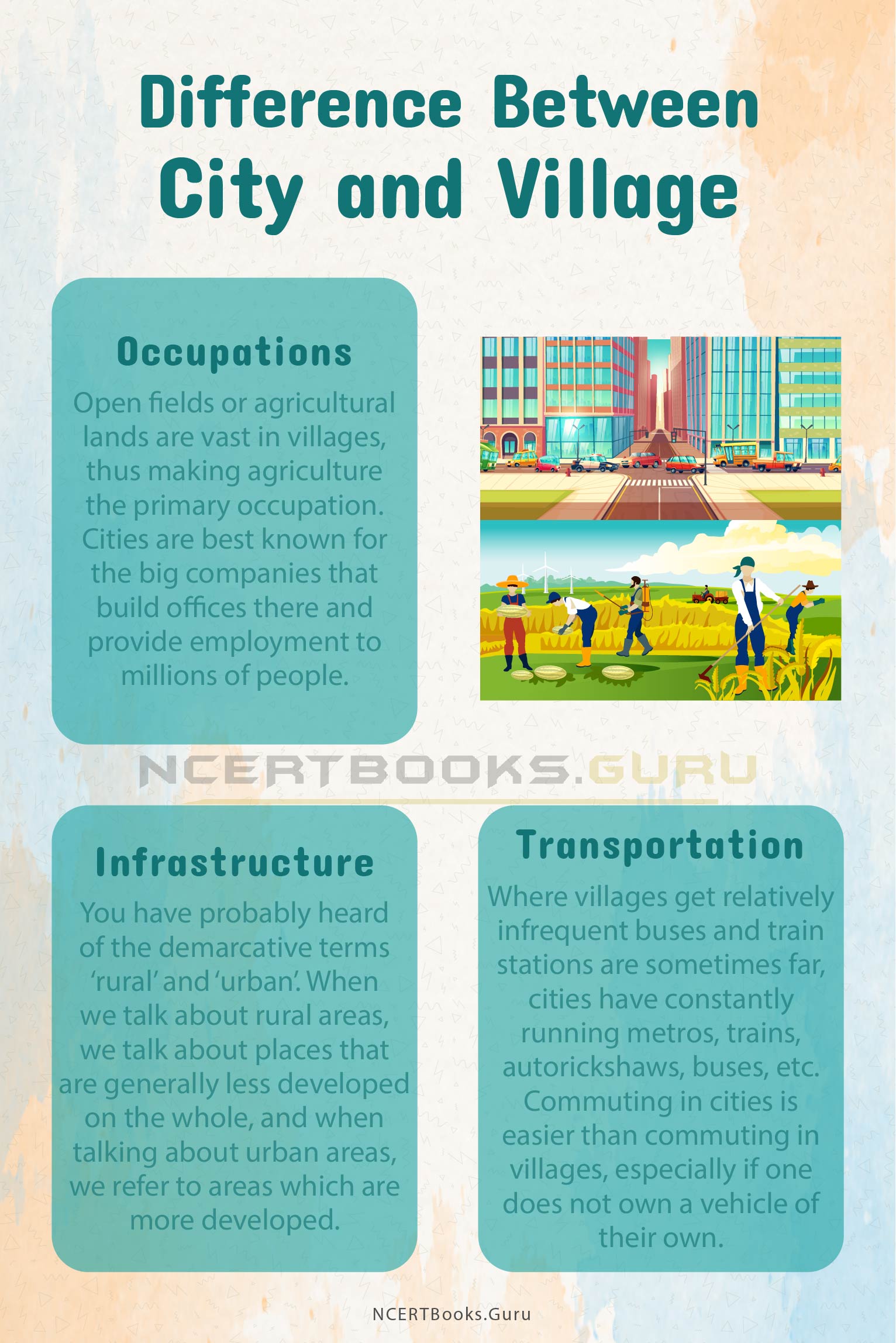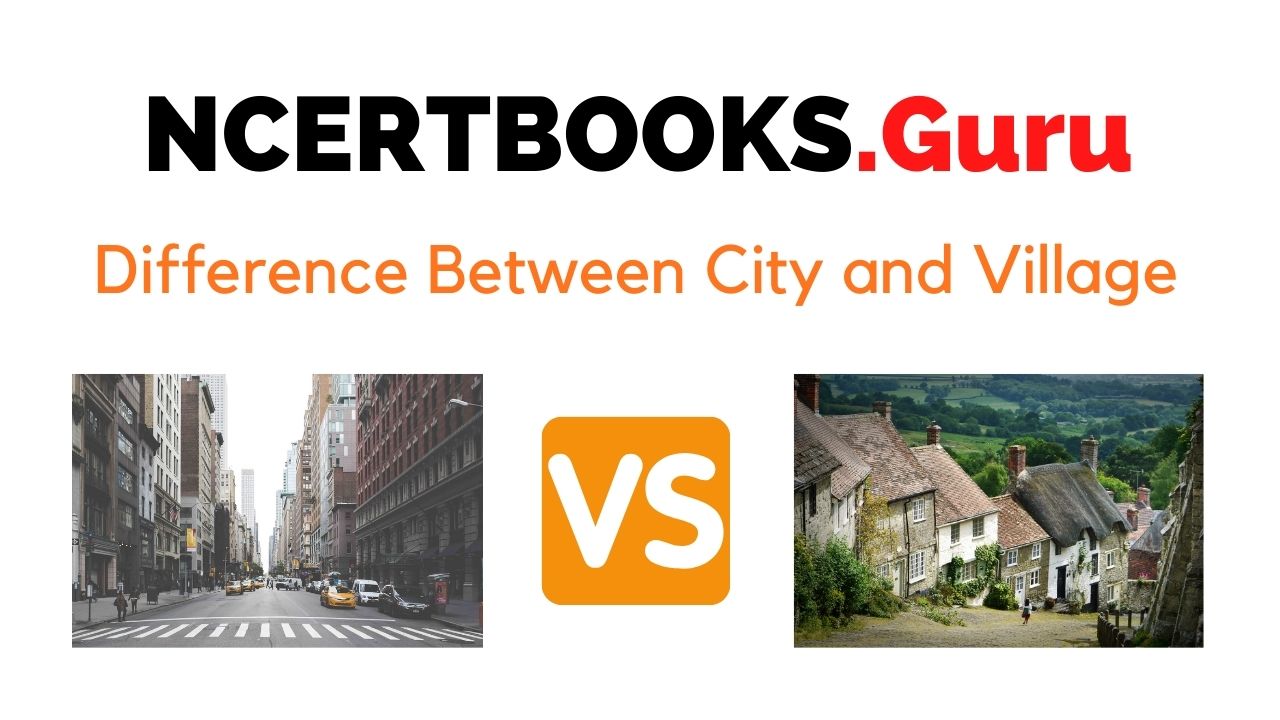When we think of the word ‘city’ we often think of tall buildings with glass windows, good roads, lots of traffic and a very high number of people populating the area. On the other hand, when we think of the word ‘village’ we usually think of cowsheds, huts, kutcha roads, lots of agricultural fields and a very less number of people populating the area. However, these are very mild generalisations that we have about what a city and a village is. The following are some of the differences between city and village.
You can also find differences between articles on various topics that you need to know. Just tap on the quick link available and get to know the basic differences between them.
What is the Difference Between City and Village

Boundary
A city usually has set limits which are reinforced using governmental measures such as toll booths. Villages are generally communities of people living in an area together, and the boundary of the village extends to the areas occupied by the community. The difference is that cities have properly demarcated boundaries whereas villages generally do not.
Population
The population in small towns and villages is generally quite low as compared to that of cities. This is because a lot of people living in villages end up migrating to bigger cities in search of educational and employment opportunities. It is perceived that better wages can be found in the cities in comparison with villages (and as per the minimum wage requirements, this also holds true). Thus, there is an influx of villagers into cities, increasing by the year, decreasing the population of villages by transferring these people to cities.
Occupations
The most common occupation in villages, since these are remote areas, is agriculture and related occupations. The families in villages either own their land or work as tillers on someone else’s land and are paid for it. Open fields or agricultural lands are vast in villages, thus making agriculture the primary occupation. Cities are best known for the big companies that build offices there and provide employment to millions of people. A lot of people aspire for jobs in the IT or finance industry, which are abundant in cities, as employees of companies in such industries get paid hefty salaries along with great benefits as well.
Infrastructure
You have probably heard of the demarcative terms ‘rural’ and ‘urban’. When we talk about rural areas, we talk about places that are generally less developed on the whole, and when talking about urban areas, we refer to areas which are more developed. The infrastructure consists of the institutions and systems that a government is meant to provide for its people, such as educational institutions like schools and colleges, medical institutions like hospitals and clinics, electricity supply, water supply, paved roads, etc.
Usually, villages face shortages in most infrastructural areas, whereas cities are developed and have more infrastructure put in place. This is also the reason why a lot of people living in villages aspire to migrate to big cities to accomplish their goals of education and employment because it is more accessible and widely available in cities as compared to villages.
Transportation
While transportation is a form of infrastructure, it holds a lot of value in itself. There is a large difference in the transportation facilities between cities and villages. Where villages get relatively infrequent buses and train stations are sometimes far, cities have constantly running metros, trains, autorickshaws, buses, etc. Commuting in cities is easier than commuting in villages, especially if one does not own a vehicle of their own.

